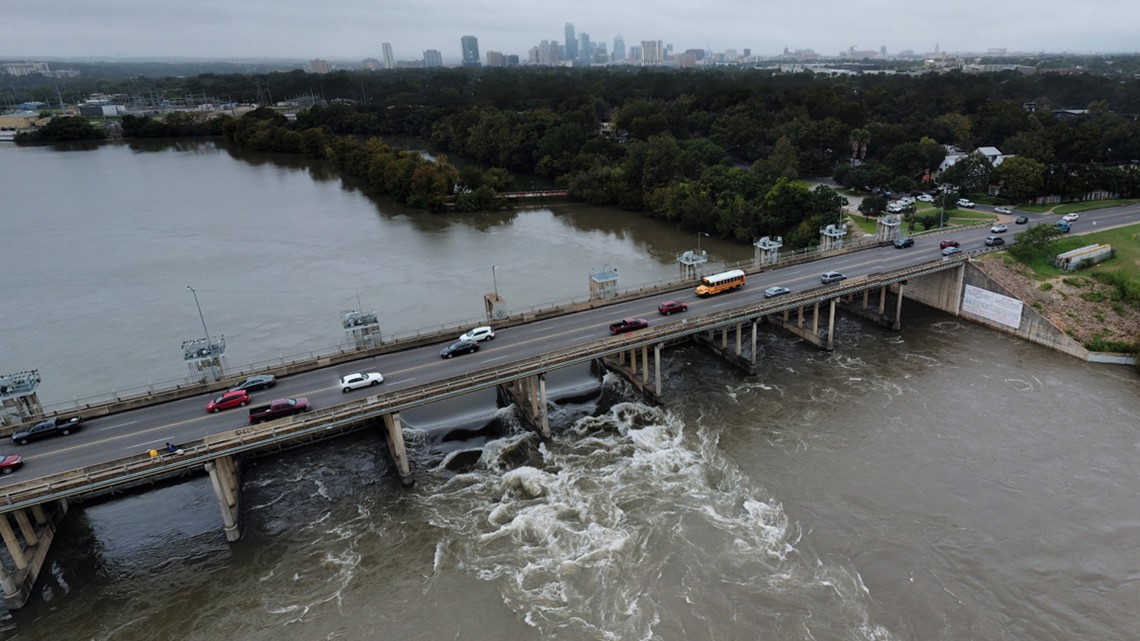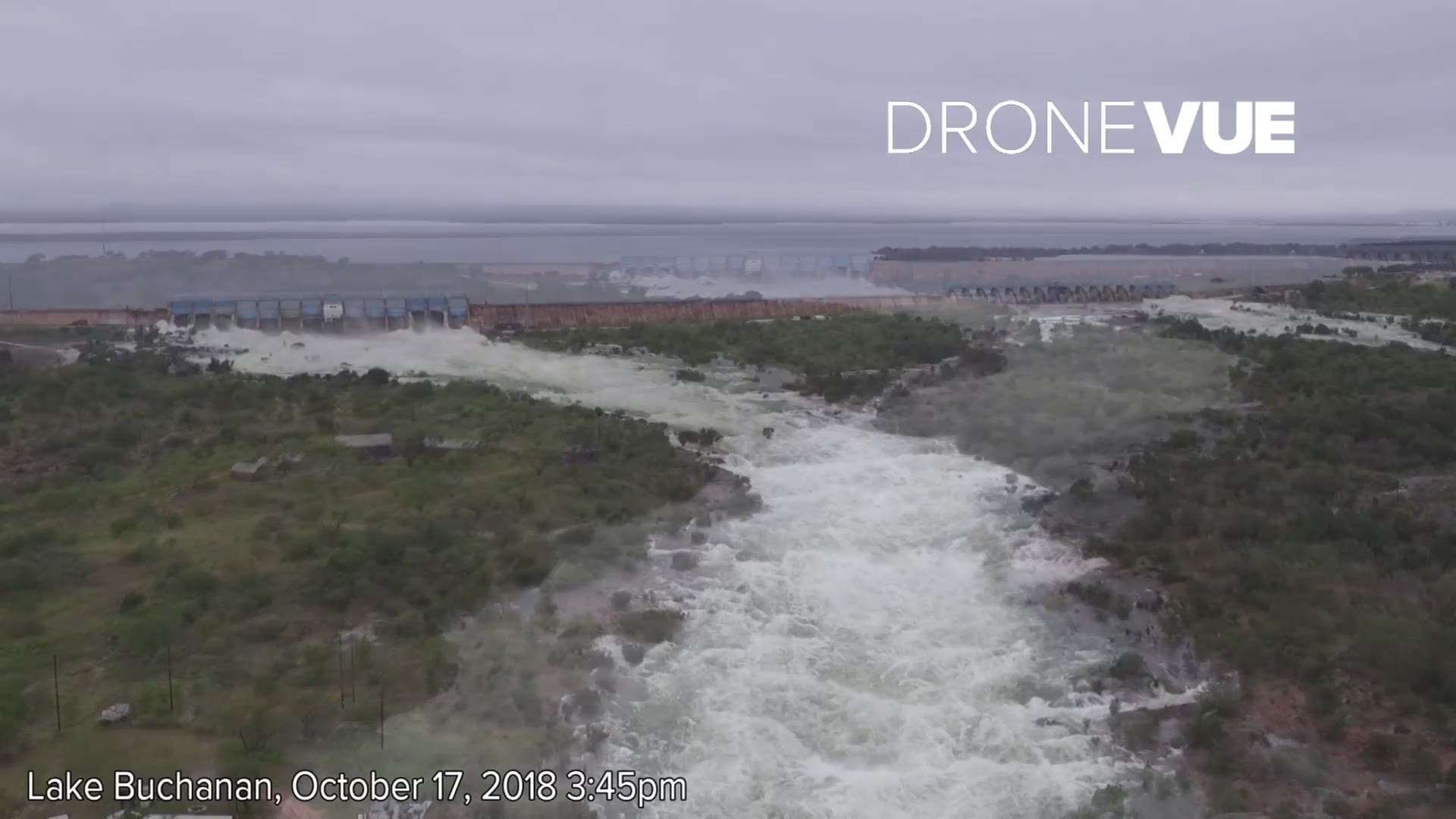Central Texas — In Central Texas their is a chain of lakes called the Highland Lakes that are fed by the Colorado River, Llano River, Pedernales River, and a few smaller rivers and creeks.
The chain of lakes consists of Lake Buchanan, Inks Lake, Lake LBJ, Lake Marble Falls, Lake Travis, Lake Austin, and Lady Bird Lake.
Each lake is held by a man-made dam, controlled by the Lower Colorado River Authority, with the exception of Lady Bird Lake's Longhorn Dam, which is controlled by the City of Austin.
The LCRA says the lakes, which are actually considered reservoirs, are used to hold the region's water supply. On top of holding the water supply within the lakes, the dams help to manage floods and generate hydroelectric power.
Buchanan Dam is located in Burnet and Llano counties and holds back the waters of Lake Buchanan.
According to the LCRA, the dam and lake were the first to be completed in the Highland Lakes chain, in 1938.

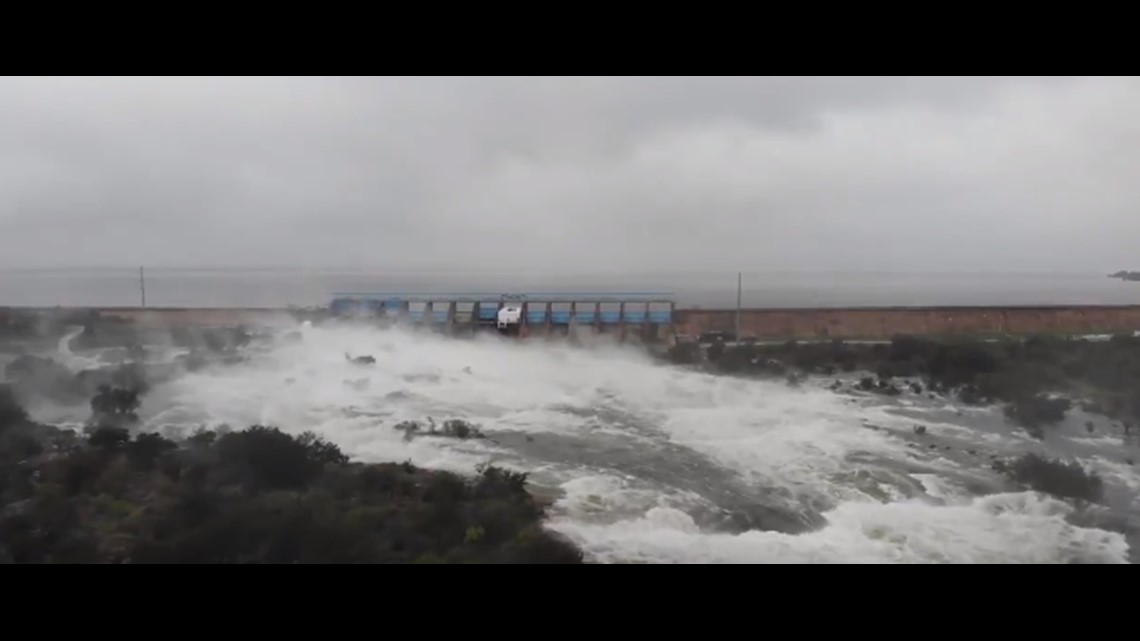
Downstream from Lake Buchanan is Inks Lake and Inks Dam, also located in Llano and Burnet counties.
RELATED:
Inks Dam works a little differently from Buchanan Dam, as it does not have flood gates. According to the LCRA, Inks Dam was completed in 1938 and works as an uncontrolled spillway, which means the water flows over the dam.
Both Buchanan Dam and Inks Dam only deal with water flowing from the Colorado River. Past Inks Dam, the Colorado River meets with the Llano River in Kingsland.

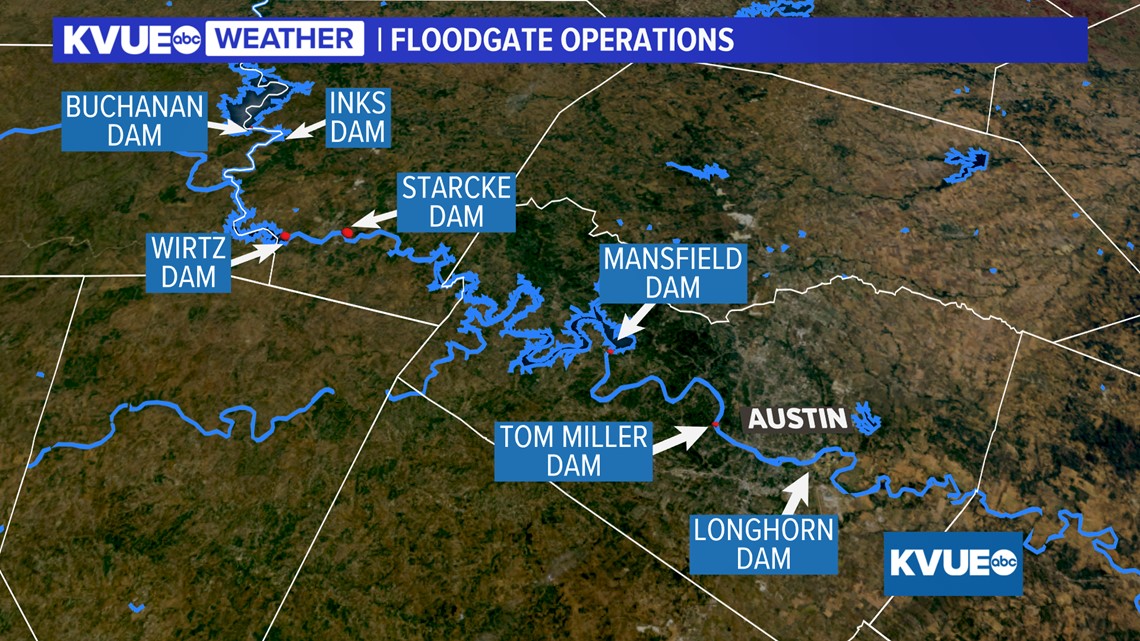
After these rivers meet they flow as the Colorado River into Lake LBJ.
Lake LBJ is located in Llano and Burnet counties and is held by Wirtz Dam, which was completed in 1951.
After passing through Wirtz Dam, water moves into Lake Marble Falls, which is located in Burnet county. Lake Marble Falls is controlled by Starcke Dam, which was built in 1951. According to the LCRA, Starcke Dam is the smallest of the Highland Lakes chain, and the last one completed.


From Starcke Dam, the water flows downstream into Lake Travis, which is located in Travis and Burnet counties. The dam that holds back the waters of Lake Travis is Mansfield Dam, which was completed in 1942. The LCRA states Lake Travis is the only lake within the chain specifically designed to hold back floodwaters. Water does not just flow into Lake Travis from Starcke Dam either, it also flows in from the Pedernales River.

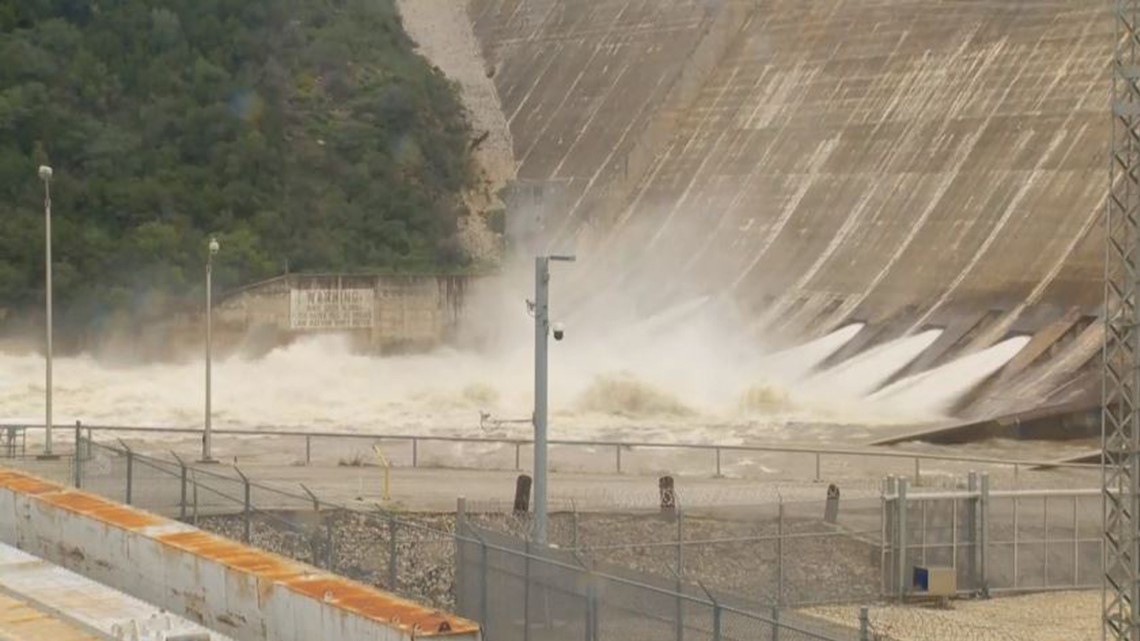
After water flows through Mansfield Dam, it moves into Lake Austin. According to the LCRA, Lake Austin was formed after the Tom Miller Dam was completed in 1940, but that was not the first time a lake was made by a dam in the area.


The LCRA states two dams sat on the site of Tom Miller Dam prior to when it was built, and both were named Austin Dam. According to the LCRA, the first dam, built from 1890 to 1893, was destroyed by a massive flood. The second dam, built from 1912 to 1915, was heavily damaged by another flood. The lake these dams held back also went by a different name, Lake McDonald.
After passing through the Tom Miller Dam, the water flows to Lady Bird Lake, controlled by Longhorn Dam. Longhorn dam was completed in 1960 and is the only dam in the Highland Lakes chain not controlled by the LCRA, it is controlled by the City of Austin. According to the City of Austin, during flood events the dam has floodgates that can be opened, which lets water flow into the Colorado River and down to the Texas coastline at Matagorda Bay.

